This Easter try out this super easy and aromatic little Lazarakia (Greek Lazarus breads) recipe and combine tradition with family cooking creating wonderful memories for your family!
The tradition of Greek Lazarakia bread (“Lazarus breads”)
Lazarakia (little Lazarus breads) are traditional Greek Easter breads eaten on Lazarus Saturday. They symbolise the resurrection of Lazarus and are shaped like a little man wrapped in a shroud, just like Lazarus is depicted.
Lazarakia are made in Greece and Cyprus and are usually small, sweet breads with spices. Unlike Greek Easter bread (tsoureki) Lazarus breads are Lenten as they don’t contain any eggs or dairy products.
Prepare the dough for the Lazarakia
Lazarakia can be made with any kind of dough you like. For this recipe I used some spices, ground clove and cinnamon, to lift the flavour and added sugar. So the breads are on the sweet side and really aromatic from the spices.
If you can find some mahleb it would be great to add some too. It will give the Lazarakia breads a really unique aroma and flavour.
Tip: Ground clove is a powerful spice, so be careful not to add too much, as the dough will become bitter.
Dry yeast is used as a leavening agent, but you could substitute with fresh yeast by just tripling the amount of the dry. Let the dough some time to rise until it doubles its size. Rising time varies greatly as it depends on the temperature of the environment. The warmer the environment the less time it will need to rise.
If you have a stand mixer it will be really helpful to use it, but the dough for the Lazarakia could be also made by hand. It will just take some more effort 😉
How to shape Lazarakia breads
Traditionally Lazarakia are shaped to resemble a little man wrapped in a shroud, just like Lazarus is depicted. You could be creative and shape them as you like. This is the way I made them shown in the photos below. It’s really easy and you could get your little helpers shape them and have lots of fun.
To shape the Lazarakia breads you just need to pinch a bit of the dough and shape separately the hands and the body. Roll the dough into a string and then place under the body and fold in front so that the hands are crossed in front of the belly. Then place 2 whole cloves for the eyes and you are done!
It is also very common to stuff the Lazarus breads with nuts and dried fruits. So, if you like you could make a separate stuffing and stuff the Lazarakia with finely chopped walnuts and raisins. Or you could just add some raisins and roughly chopped walnuts in the dough at the end (before rising).
Other traditional Greek Easter recipes
If you are looking forward to make all the tradition Greek Easter recipes and celebrate with your loved ones, then these are my favourite ones for you to try:
- Traditional Tsoureki recipe (Greek Easter Bread)
- Easy Tsoureki in a bread machine
- Koulourakia recipe (Greek Easter cookies)
- Cypriot Flaounes recipe
- Dyed Easter eggs
- Magiritsa (Greek Easter soup)
- Greek roast Lamb with potatoes

Lazarakia bread recipe (Greek Easter Lazarus breads)
- Prep Time: 15 min (plus rise time)
- Cook Time: 20 min
- Total Time: 35 minutes
- Yield: 20 lazarakia 1x
- Category: Breads
- Method: Baked
- Cuisine: Greek
- Diet: Vegan
Description
This Easter try out this aromatic little Lazarakia (Greek Lazarus breads) recipe and combine tradition with family cooking creating wonderful memories for your family!
Ingredients
For the “prozymi” (Mixture 1)
- 350g lukewarm water (12.3 oz.)
- 8g dry yeast (0.3 oz.)
- 10g sugar (0.35 oz.)
- 70g all purpose flour (2.5 oz.)
For the dough
- 635g all purpose flour (22 oz.)
- 90g sugar (3.2 oz.)
- 1/2 tsp ground clove
- 2 tsps ground cinnamon
- 2 tsp mahleb powder (optional)
- 50g olive oil (1.8 oz.)
- 25g vegetable oil (0.9 oz.)
- 1 tbsp sugar dissolved in 50g/ 2 oz. water for coating
- 40 whole cloves for the eyes
Instructions
- To prepare this Lazarakia bread recipe start by adding all the ingredients from the “mixture 1” into the bowl of a stand mixer. Mix to combine. Set aside for 10-15 minutes to allow the yeast to work.
- In a separate bowl add the flour, spices, salt and sugar and mix with a spoon to combine.
- Add this mixture in the stand mixers bowl along the yeast mixture from step 1. Pour in the olive oil and vegetable oil. Use a dough hook to knead the dough until smooth and not sticky for about 10 minutes.
- Cover the bowl with a towel and let it rise in a warm environment for about 1 hour, until it doubles its size.
- Gently deflate the dough with your hands and separate the dough in 20 balls. Shape each ball like shown in the pictures.
- Dissolve the sugar in the water and brush the top of the breads.
- Bake in preheated oven at 160-170C for about 20 minutes until golden and cooked through. Enjoy!
Nutrition
- Serving Size: 1 little bread
- Calories: 184 kcal
- Sugar: 5.7g
- Sodium: 2mg
- Fat: 4g
- Saturated Fat: 1.4g
- Unsaturated Fat: 2.3g
- Trans Fat: 0g
- Carbohydrates: 33.2g
- Fiber: 1.2g
- Protein: 3.9g
- Cholesterol: 0mg

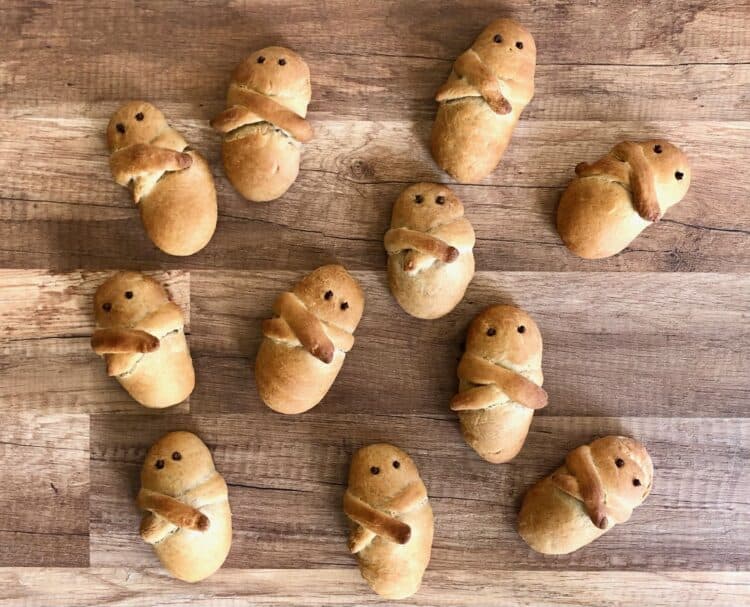

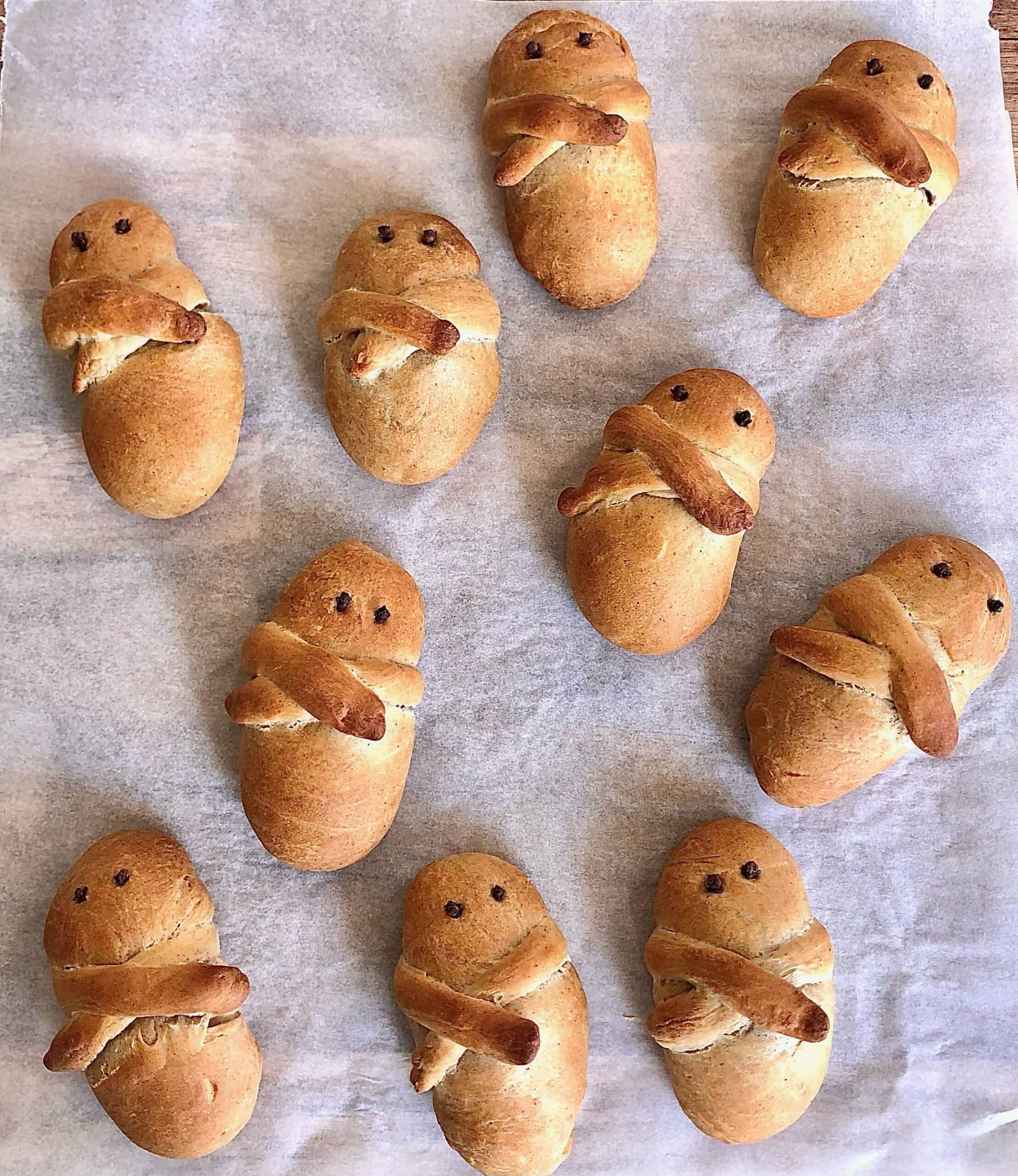
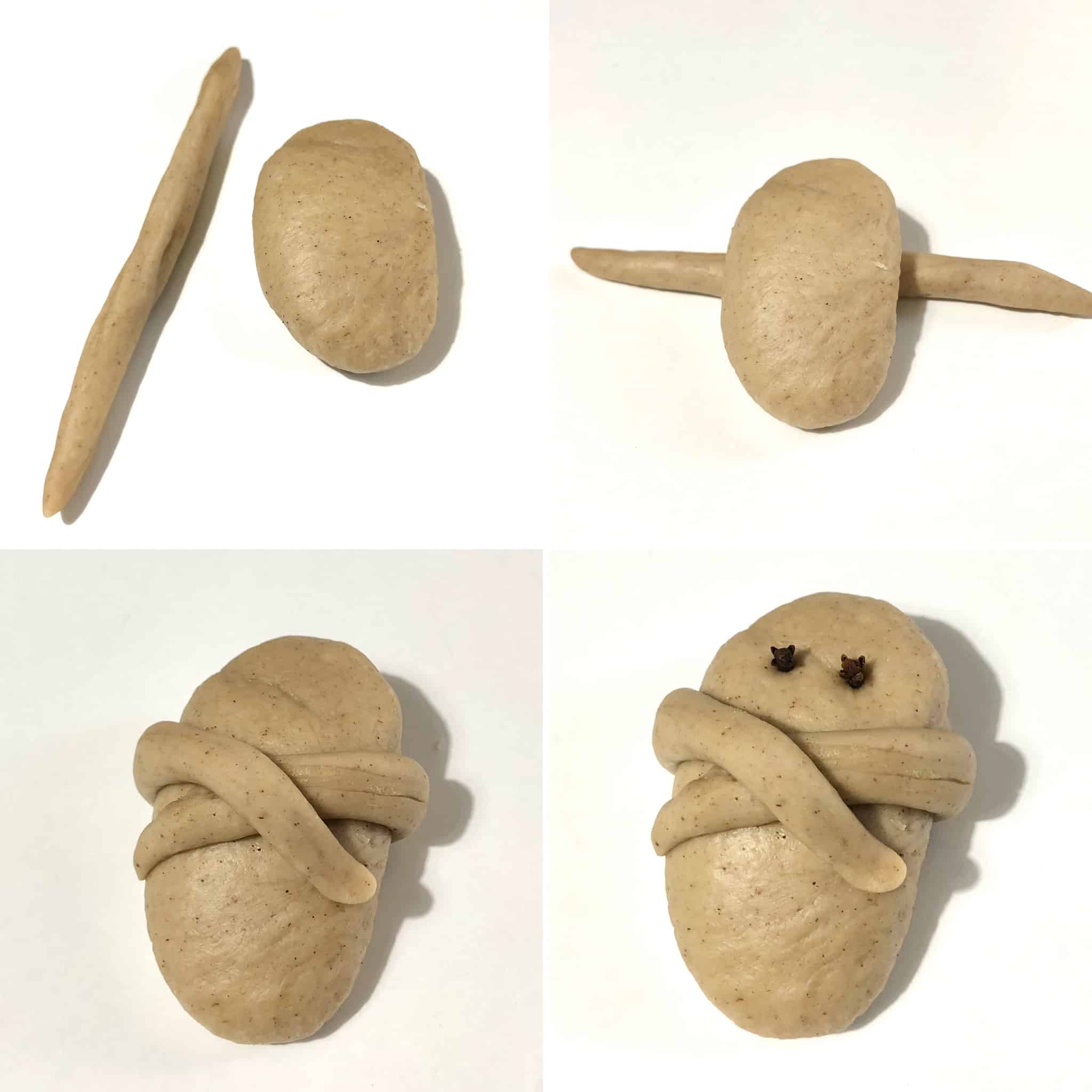
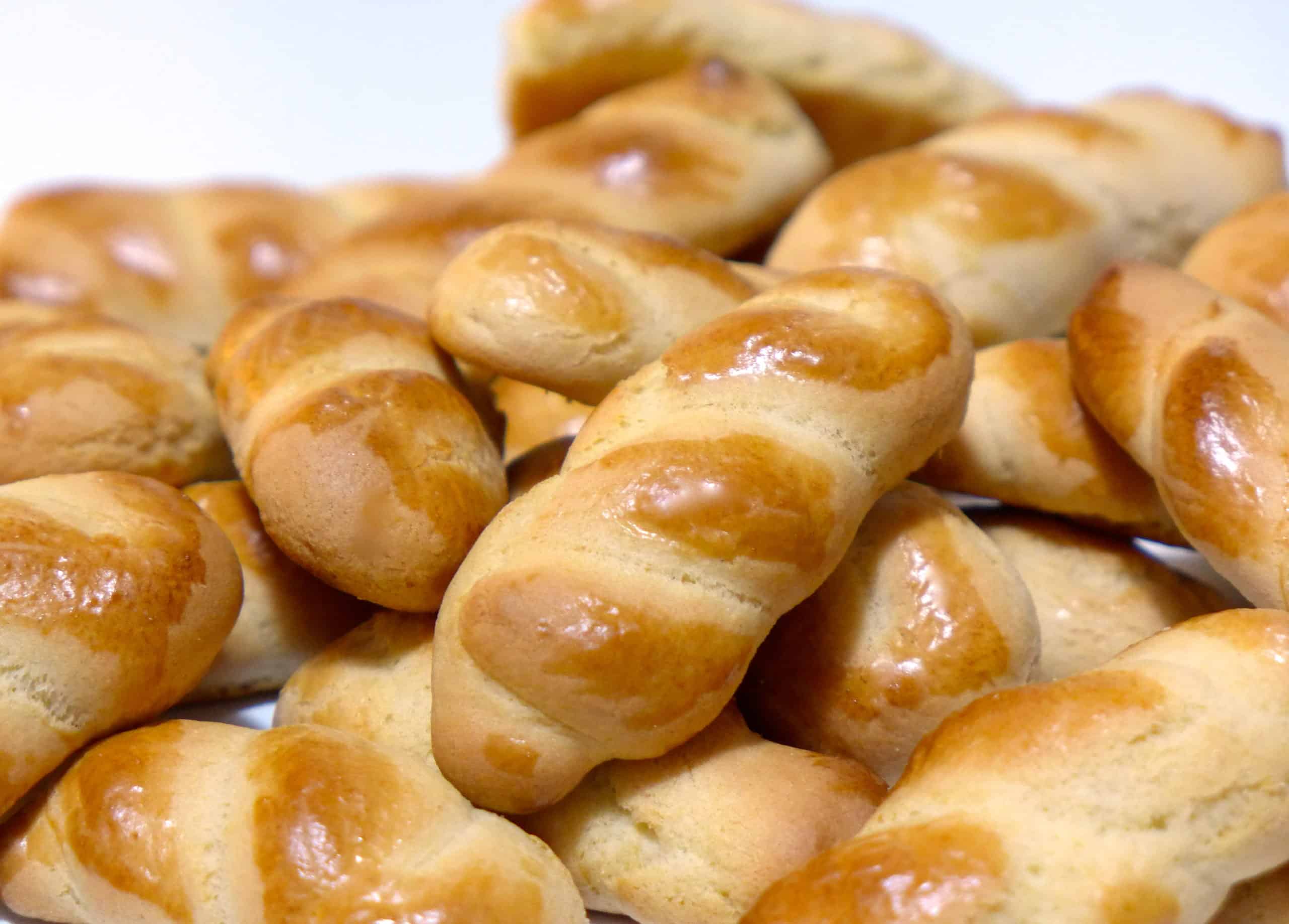
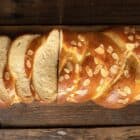
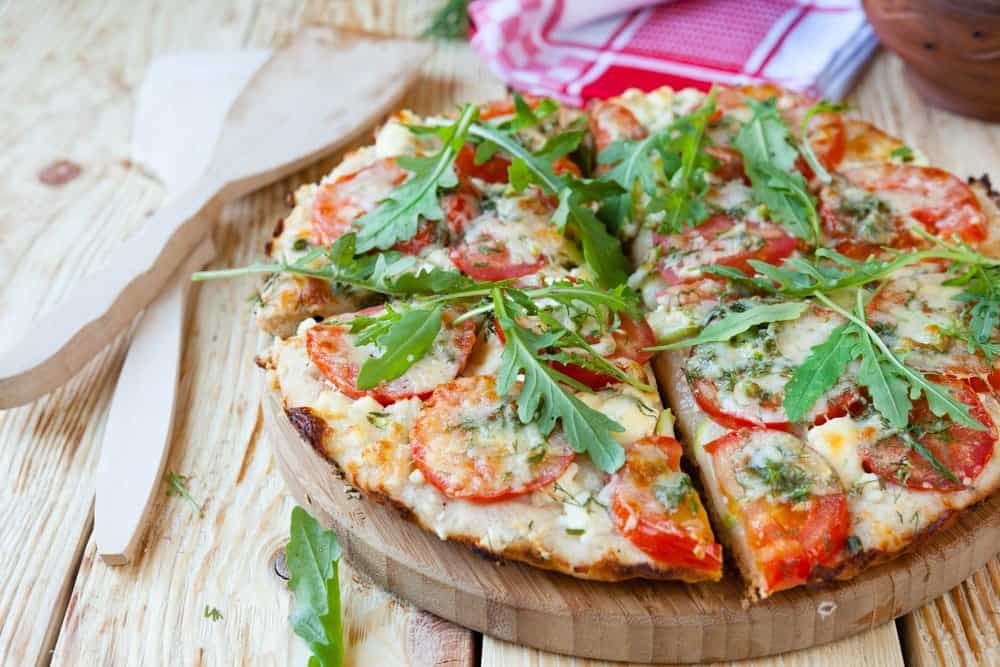
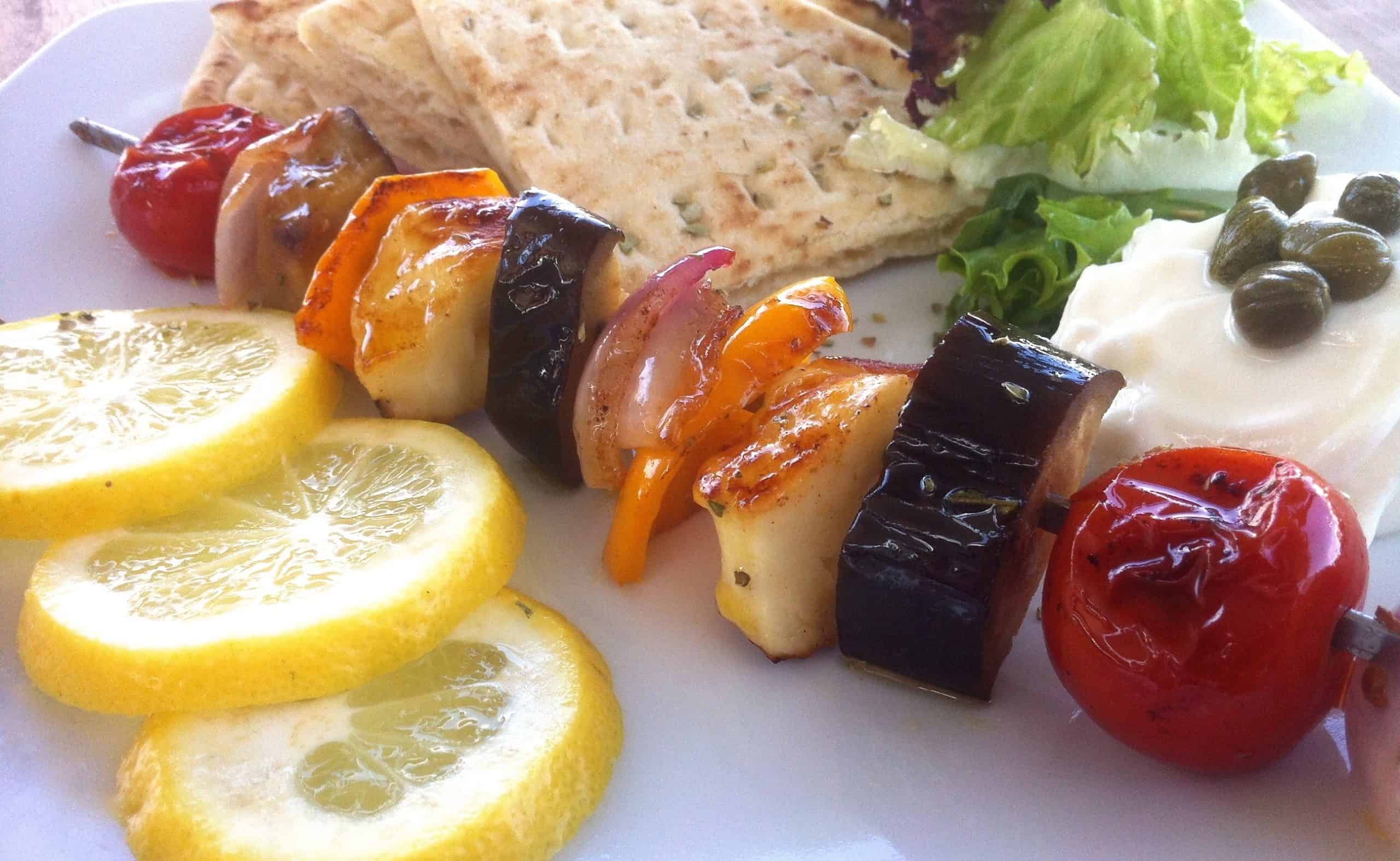
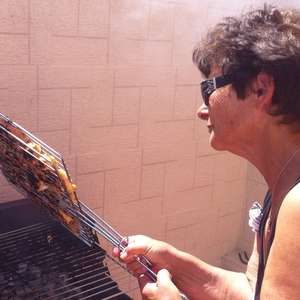
I love this idea! This is the first time I have heard about this but what a wonderful teaching tool for Sunday School. Question on shaping the dough: Instead of positioning the arms downward shouldn’t they be oriented upwards? This is the traditional pose for the dead and also for people receiving Holy Communion. What do you think?
Thank you Anne for the great feedback! I think you may be right on how the arms can be positioned 🙂
In the instructions you say “add….and salt”. In the ingredients you don’t mention salt. So how much salt do we add?
How much salt do we add?